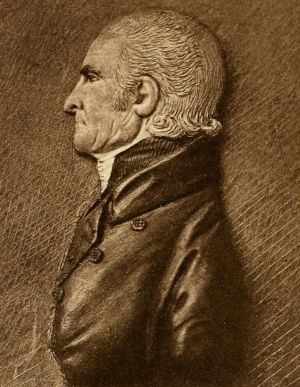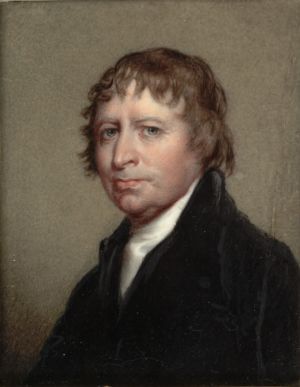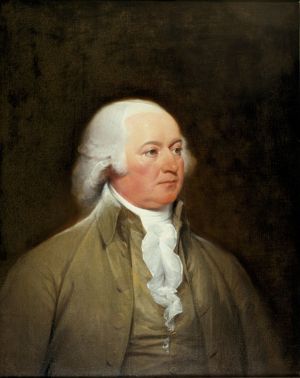Digest:The origins and impact of Massachusetts's Constitution
More actions
Welcome to the WickedGov Digest, the free newsletter about history and government in Massachusetts!
In our inaugural issue, we'll discuss the history of one of the most influential yet overlooked political documents in American history: the Massachusetts Constitution. Written and adopted in 1780, the document is the second-oldest current constitution in the world, behind only San Marino. But how was it produced, and what made it work well for so long?
The Constitution's Berkshire roots

...the people are the fountain of power.
—Letter from the people of Pittsfield to the Massachusetts legislature, 1776
Around the time of the Declaration of Independence and the start of the Revolutionary War, most of the newly-formed US states were rushing to draw up frames of government. In Massachusetts, though, the Provincial Congress was attempting to revise the 1691 colonial charter rather than devising an entirely new fundamental document.
The people of the town of Pittsfield in Berkshire County strongly objected to this moderate stance. Many from Pittsfield and the surrounding area formed a group called the Berkshire Constitutionalists, which was led by Thomas Allen, a local Congregationalist pastor. Under the influence of the Constitutionalists, Pittsfield refused to allow state courts to sit in Berkshire County, instead electing its own slate of judges and demanding that the provincial legislature grant commissions to those judges.
Pittsfield and the Berkshire Constitutionalists also wrote a series of petitions to the legislature asking for the colonial charter to be thrown out and a republican constitution to be adopted in its place. In 1776, the legislature agreed, starting plans to draft a new form of government for an independent state.
Imperfect first draft: The 1778 Constitution

Over the class of unalienable rights the supreme power hath no controul, and they ought to be clearly defined and ascertained in a BILL OF RIGHTS, previous to the ratification of any constitution...
—Theophilus Parsons, The Essex Result
After two years of debate surrounding the ratification process, the state legislature, known as the General Court, drafted the Massachusetts Constitution of 1778. For ratification, men in the state would need to approve it at town meetings by a two-to-one margin.
At these town meetings in the spring of 1778, many issues were raised with the Constitution as it was written. For one, the governor had little independence from the legislature and had no authority to veto unfavorable legislation. (This reflected a pattern in early state constitutions that was caused by distrust in unelected royal governors.)
Another problem was that some felt that it was inappropriate for the legislature to write the Constitution. They believed that a special constitutional convention should have been elected instead. Finally, perhaps the most fatal flaw of the 1778 Constitution was the fact that it lacked a bill of rights.
In April 1778, a young lawyer named Theophilus Parsons attended a meeting of Essex County statesmen where the proposed Constitution was heavily criticized. He summarized the meeting in a pamphlet called The Essex Result. The pamphlet listed eighteen objections to the Constitution and passionately argued that the inalienable rights of the people should be explicitly codified and protected in a bill of rights.
In the end, The Essex Result was likely a significant influence on popular opinion—the 1778 Constitution was overwhelmingly rejected by nearly a five-to-one margin.
Despite its resounding defeat at the polls, the 1778 Constitution represented a milestone in American government: it was the first American constitution to be submitted to the people for a popular vote.
Take two: The 1780 Constitution

All power residing originally in the people, and being derived from them, the several magistrates and officers of government, vested with authority, whether legislative, executive, or judicial, are their substitutes and agents, and are at all times accountable to them.
—Article V, Massachusetts Declaration of Rights (1780)
After the rejection of the 1778 Constitution, the people of Massachusetts were largely steadfast in their committment to creating a new constitutional order. In August 1778, the Berkshire Constitutionalists even went to far as to threaten secession from the state if a new Constitution was not promptly adopted!
In February of the following year, the General Court acquiesced to create a special constitutional convention, and in June, convention delegates were elected.
During the darkest days of the Revolutionary War, an exceptionally cold winter, and a smallpox outbreak, the Constitutional Convention met in Cambridge and elected a committee of 31 delegates to handle drafting the Constitution. In turn, the committee delegated its authority to a three-person subcommittee, and the three-person subcommittee left all its work to John Adams, the 45-year-old lawyer and future President of the United States.
Adams's Constitution had several changes from 1778: it included two independent houses of the legislature, an independent governor with a veto power, and a bill of rights, which was symbolically included at the very start of the document.
Since Adams successfully fixed the pitfalls of the previous Constitution, the 1780 Constitution was adopted by the convention and ratified by the people, starting a new chapter in the Commonwealth's history.
An influential, long-lasting document
The history of the Massachusetts Constitution certainly didn't end with its ratification. It had a powerful influence on the constitutions of many other states and even the U.S. Constitution. In fact, some parts of the U.S. Constitution, such as sections of the Fourth and Fifth Amendments, are copied almost verbatim from it.
One of the reasons the Massachusetts Constitution has lasted so long is its creation of three independent and equal branches of government. Most states gave almost total power to legislatures and little power to governors. This led to governmental dysfunction and the need for constitutional revisions. Massachusetts was able to avoid this problem.
Another contributor to the Constitution's longevity is its simple amendment process. Over the years, it has been amended 122 times, with each amendment getting the approval of the people at the ballot box. Regular amendments allow an old document to adapt to modern times and reduce the likelihood that a complete replacement will be needed.
This edition's survey
Your thoughts on future topics for the Digest would be greatly appreciated! Please take our one-minute survey to share your ideas.
If you'd like to hear more from the Digest, feel free to subscribe for free and receive it in your inbox.
Thanks for reading, and hope to see you next time!
Works cited
- Cella, Alexander J. "The People of Massachusetts, a New Republic, and the Constitution of 1780: The Evolution of Principles of Popular Control of Political Authority 1774-1780." Suffolk University Law Review, vol. 14, no. 4, 1980, pp. 975–1006. HeinOnline, https://heinonline.org/HOL/Page?handle=hein.journals/sufflr14&id=999. Accessed 12 October 2025.
- Frothingham, Louis A. A Brief History of the Constitution and Government of Massachusetts: With a Chapter on Legislative Procedure. Cambridge, MA, Houghton Mifflin Company, 1925.
- Hennessey, Edward F. "Massachusetts Roots of the Constitution of the United States." Massachusetts Law Review, vol. 72, no. 3, 1987, pp. 3–6. HeinOnline, https://heinonline.org/HOL/P?h=hein.barjournals/malr0072&i=103.
- Taylor, Robert J. "Construction of the Massachusetts Constitution." Proceedings of the American Antiquarian Society, vol. 90, no. 2, 1980, pp. 317–346. 0044-751X.
- "The Essex Result". Founders' Library. Philadelphia, PA: National Constitution Center.